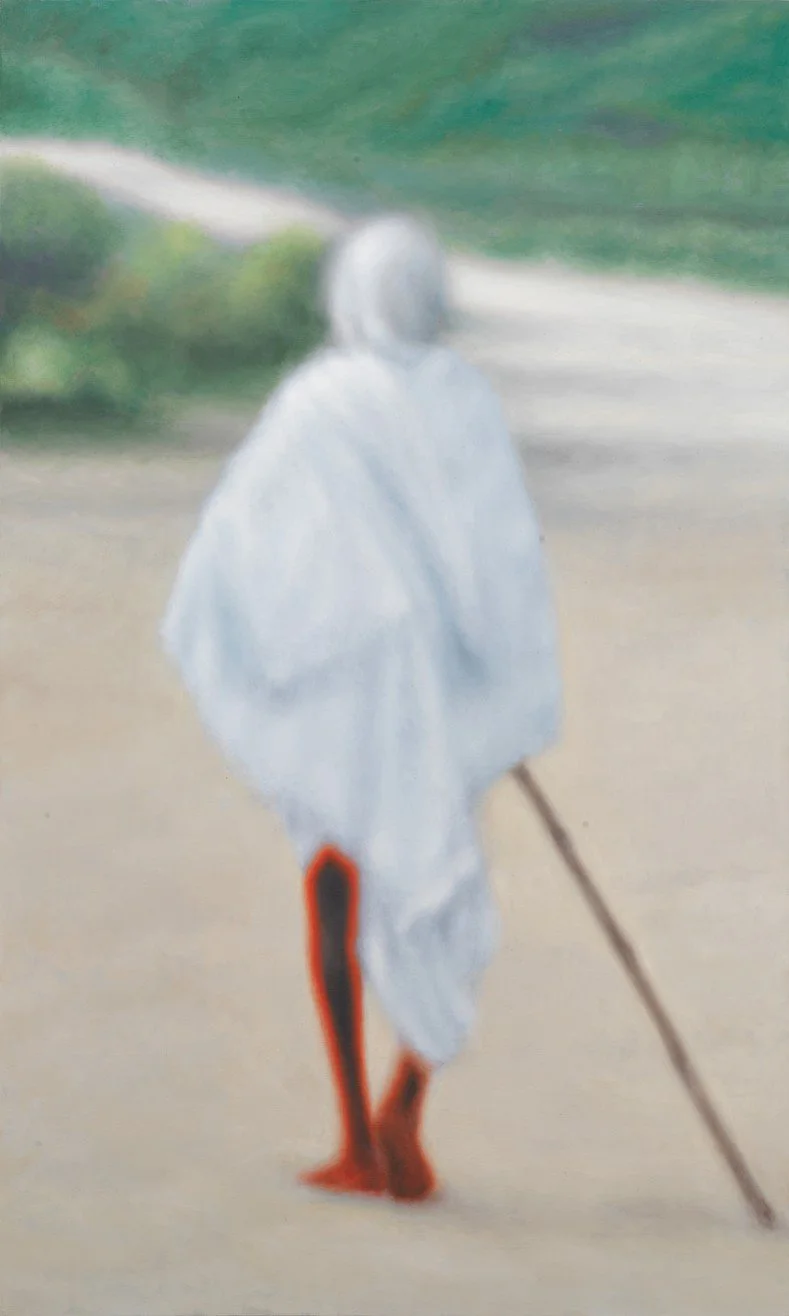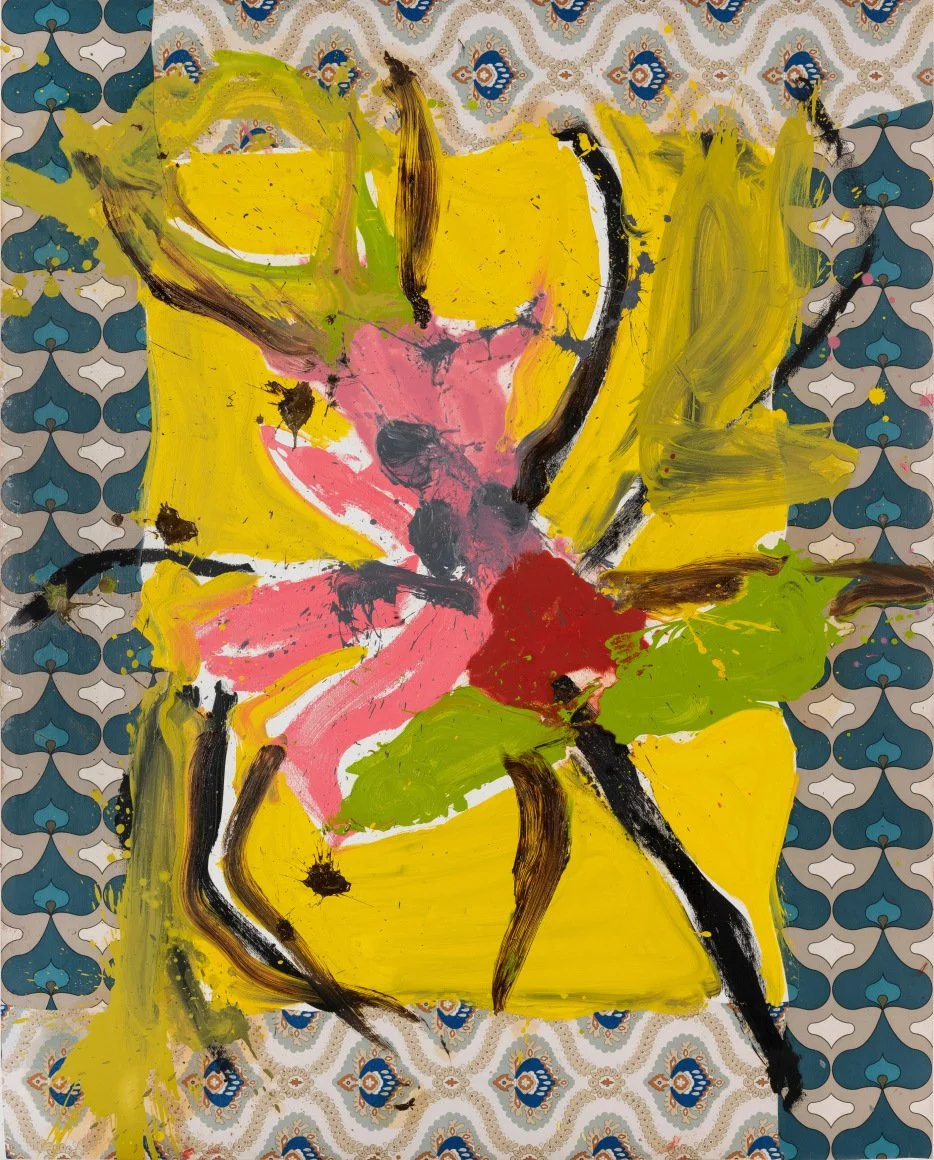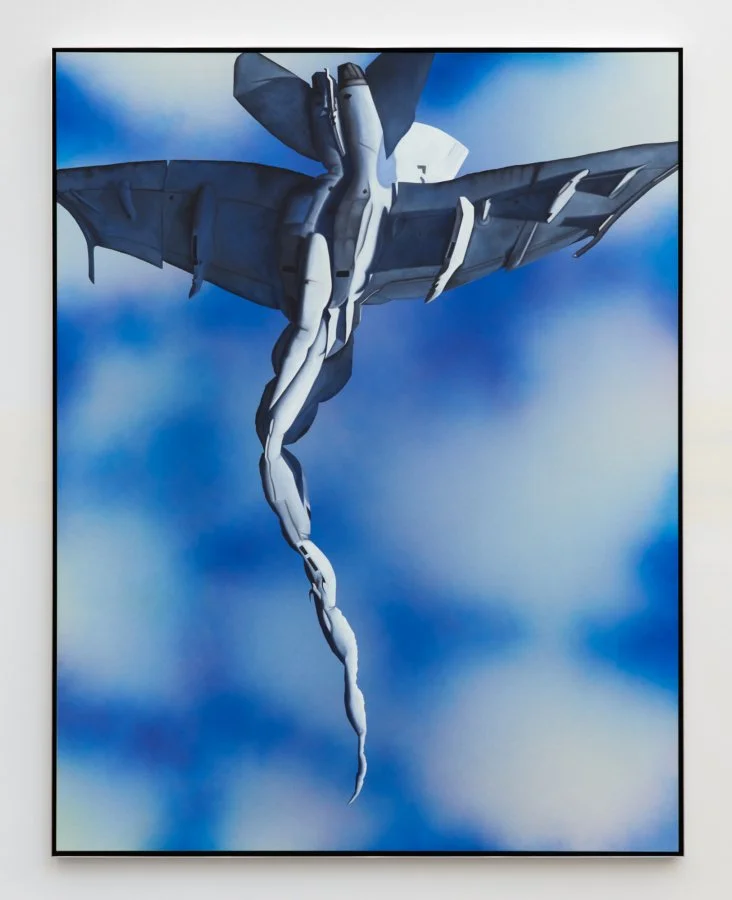Y.Z. Kami
Night and Day
New York, 555 West 24th Street
Night and Day juxtaposes two distinct bodies of work by Kami: the portrait paintings that have been at the center of his practice for more than three decades, and Night Paintings, a series that he began in 2017. In conjunction with Endless Prayers, Dome paintings, and other ongoing projects, the Iranian American artist’s oeuvre represents a deep consideration of representation and abstraction, humanism and spirituality.
Each of Kami’s large-scale painted portraits depicts a single face in muted colors on an opaque ground. Frontally composed and closely cropped, Kami’s self-absorbed subjects are removed from the specificity of context. From Aïsha (2021–22) and Lu (2022) to The Monk (2022) and Woman in Dark Sweater (2022), these paintings are titled by first names or descriptions, marking a continuum between individual identity and universality. Using layers of brushstrokes to blur his subjects’ features, Kami concentrates on the ineffability of individual presence. From longtime friends and acquaintances to strangers he has met in passing, his subjects form an ensemble of varied age, gender, and ethnicity. Kami’s introspective faces also recall the Fayum portraits of Roman-era Egypt—naturalistic likenesses of the deceased that were affixed to mummies. The works in Night and Day affirm—as do their ancient precedents—the common humanity in our observation of others.
Kami’s Night Paintings are made using a single shade of indigo—said to be the color of the night—which he blends with gradations of white to summon the sensorial dynamics of presence and absence. Each canvas is filled with apparitions that float just past the limits of materiality and concrete representation. Composed with hazy, tenebrous brushwork, these abstractions evoke a mental inner state. Their shifting outlines and hazy boundaries make manifest soft edges and shimmering biomorphic patterns, enticing the viewer to recognize elements from the human realm while ultimately confounding all attempts to do so. The Night Paintings thereby limn the boundaries between the earthly and the sublime.
Messenger IV (2022), a single painting that belongs to neither series, represents a cloaked figure seen from behind, painted in a soft-focus style. The anonymous subject appears in the foreground of a crossroads, a setting of passage and transition. Kami has positioned this figure using the classical compositional device of the Rückenfigur (back-figure), with which the viewer is encouraged to identify, thus implicating him or her in the space and narrative suggested.
Contrary to the instantaneity of a photograph, Kami composes his paintings over an extended period, his nuanced brushwork built up in many layers. Consequently, they reward sustained looking, revealing their character over time and bringing awareness both to perception as a process and to contemplation of the nature of being.






